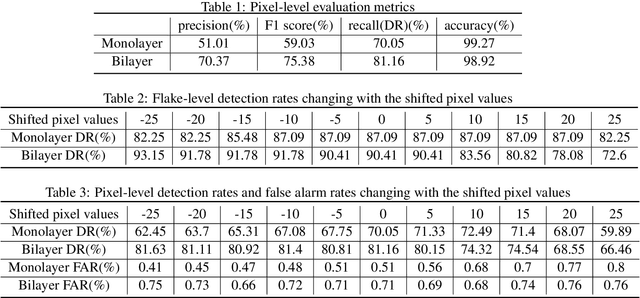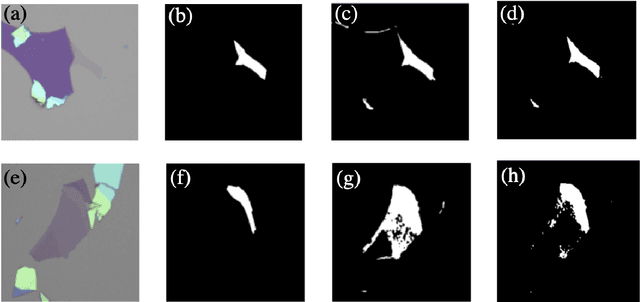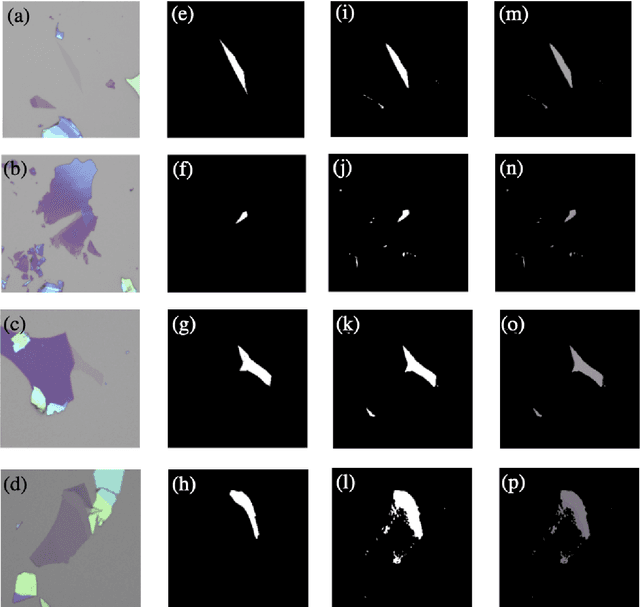Siyu Qi
A Principled Hierarchical Deep Learning Approach to Joint Image Compression and Classification
Oct 30, 2023



Abstract:Among applications of deep learning (DL) involving low cost sensors, remote image classification involves a physical channel that separates edge sensors and cloud classifiers. Traditional DL models must be divided between an encoder for the sensor and the decoder + classifier at the edge server. An important challenge is to effectively train such distributed models when the connecting channels have limited rate/capacity. Our goal is to optimize DL models such that the encoder latent requires low channel bandwidth while still delivers feature information for high classification accuracy. This work proposes a three-step joint learning strategy to guide encoders to extract features that are compact, discriminative, and amenable to common augmentations/transformations. We optimize latent dimension through an initial screening phase before end-to-end (E2E) training. To obtain an adjustable bit rate via a single pre-deployed encoder, we apply entropy-based quantization and/or manual truncation on the latent representations. Tests show that our proposed method achieves accuracy improvement of up to 1.5% on CIFAR-10 and 3% on CIFAR-100 over conventional E2E cross-entropy training.
UFed-GAN: A Secure Federated Learning Framework with Constrained Computation and Unlabeled Data
Aug 10, 2023Abstract:To satisfy the broad applications and insatiable hunger for deploying low latency multimedia data classification and data privacy in a cloud-based setting, federated learning (FL) has emerged as an important learning paradigm. For the practical cases involving limited computational power and only unlabeled data in many wireless communications applications, this work investigates FL paradigm in a resource-constrained and label-missing environment. Specifically, we propose a novel framework of UFed-GAN: Unsupervised Federated Generative Adversarial Network, which can capture user-side data distribution without local classification training. We also analyze the convergence and privacy of the proposed UFed-GAN. Our experimental results demonstrate the strong potential of UFed-GAN in addressing limited computational resources and unlabeled data while preserving privacy.
End-to-End Optimization of JPEG-Based Deep Learning Process for Image Classification
Aug 10, 2023Abstract:Among major deep learning (DL) applications, distributed learning involving image classification require effective image compression codecs deployed on low-cost sensing devices for efficient transmission and storage. Traditional codecs such as JPEG designed for perceptual quality are not configured for DL tasks. This work introduces an integrative end-to-end trainable model for image compression and classification consisting of a JPEG image codec and a DL-based classifier. We demonstrate how this model can optimize the widely deployed JPEG codec settings to improve classification accuracy in consideration of bandwidth constraint. Our tests on CIFAR-100 and ImageNet also demonstrate improved validation accuracy over preset JPEG configuration.
Machine Learning-based Automatic Graphene Detection with Color Correction for Optical Microscope Images
Mar 24, 2021



Abstract:Graphene serves critical application and research purposes in various fields. However, fabricating high-quality and large quantities of graphene is time-consuming and it requires heavy human resource labor costs. In this paper, we propose a Machine Learning-based Automatic Graphene Detection Method with Color Correction (MLA-GDCC), a reliable and autonomous graphene detection from microscopic images. The MLA-GDCC includes a white balance (WB) to correct the color imbalance on the images, a modified U-Net and a support vector machine (SVM) to segment the graphene flakes. Considering the color shifts of the images caused by different cameras, we apply WB correction to correct the imbalance of the color pixels. A modified U-Net model, a convolutional neural network (CNN) architecture for fast and precise image segmentation, is introduced to segment the graphene flakes from the background. In order to improve the pixel-level accuracy, we implement a SVM after the modified U-Net model to separate the monolayer and bilayer graphene flakes. The MLA-GDCC achieves flake-level detection rates of 87.09% for monolayer and 90.41% for bilayer graphene, and the pixel-level accuracy of 99.27% for monolayer and 98.92% for bilayer graphene. MLA-GDCC not only achieves high detection rates of the graphene flakes but also speeds up the latency for the graphene detection process from hours to seconds.
 Add to Chrome
Add to Chrome Add to Firefox
Add to Firefox Add to Edge
Add to Edge